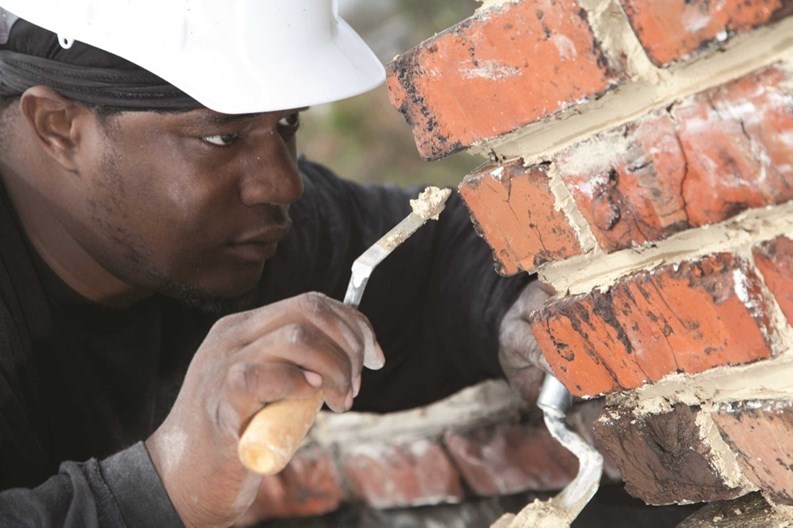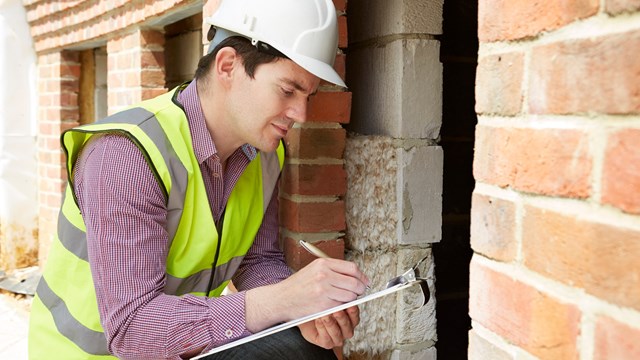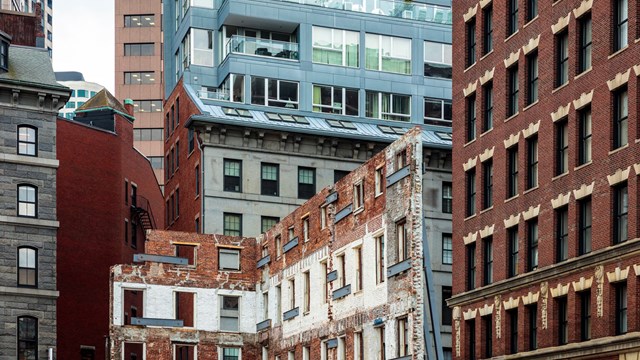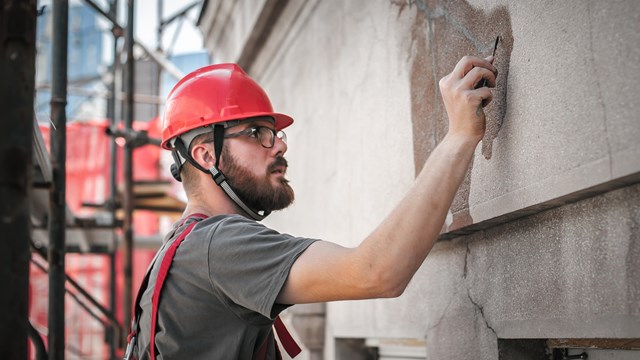From the hills of northern Connecticut to the brownstones of Boston and New York, brickwork is everywhere across the northeast. Around since the early 1600s, the popular building material is commonly used not only because of its aesthetic appeal, but also because of brick’s practicality. Naturally weatherproof, bricks protect will against wind, fire, and a large amount of water damage. Sounds like a magical building material, right?
Well, not quite. What many condominium associations don’t understand is that there is a fair share of maintenance that goes into brickwork. From repointing and caulking to cleaning and sanding—brick walls are an investment, and if taken care of appropriately, offer a great, classic option.
The Brick Basics
When it comes to your average construction job, the most common type of brick used for a residential job is called a face brick. This brick comes in all sorts of different shapes, sizes, and colors, and allows the architect to play around with different visuals for the surface of their building. Along with face brick, common products include a pressed brick featuring very square corners.
These days, though, a majority of the walls are made of brick veneers. What’s that mean? Essentially, the brick you see on the outside of the building is the only actual layer of brick there is. Behind that layer of brick, there is a cavity or airspace roughly 1 to 2 inches wide, and then a backup wall behind that which is generally made of concrete block or steel studs with gypsum sheeting. Compared, for example, to old school buildings—specifically those built before 1950—which often boasted walls made of one to two feet of layered brick, this is a completely different ballgame.
So you must be wondering, why the veneers? Well, in the long run the brick face is much easier to take care of, and since it uses less mortar and requires less repointing, is more cost effective.
Waterproofing
Although sturdy, reliable building components, unsealed bricks do tend to absorb water. In older buildings made of brick, this wasn’t as much of an issue because they were used for working environments like textile mills or rope manufacturing facilities. Ralph Noblin, president of Noblin & Associates, a consulting engineering firm based in Bridgewater, Massachusetts, says these days there’s more of a concern.
“Now, water coming into someone’s bedroom or living room—it’s a different dynamic,” Noblin says. “It’s understood when brick and mortar gets to be around that age, there’s probably going to be some significant work required.”
The good news? Practices have improved. In many of today’s buildings featuring brick veneers, there’s a flashing system within the airspace that directs water downward and out through a weep hole at the bottom of the wall. These weep holes are essential to the maintenance of the wall, ensuring that the water escapes the structure.
“You need to have these flashings in place at critical locations so that when the water gets through the brick, gets into that airspace and that cavity behind, it drops straight down, hits these flashings and comes out of the wall through the weep holes,” said Noblin.
The possibility of water damage also affects the pointing between the bricks. Over time, the weather and various other elements cause the original mortar between the bricks to appear unattractive and dingy. That’s where the repointing process comes into play. Back in the day, contractors attempted to simply slather on new mortar to cover up the older product.
“The industry matured as time’s gone on, particularly after the last 20 years,” said Noblin. “Now we understand that you have to cut out the old mortar to the depth of approximately one inch, and replace it with new mortar.”
Something to take into account: The type of mortar you’re dealing with when it comes to repointing. Bob Gensel, who serves on the board of directors for the Sealant, Waterproofing, and Restoration Institute (SWR Institute), suggests that contractors test the existing mortar to determine the proper mortar strength for the building being repaired. “Mortar which is excessively high in compressive strength will rapidly fail and contribute to spalling of the masonry units,” he cautions.
One small problem is that it’s hard to match mortar exactly from a color standpoint. The new mortar tends to be darker than the old mortar, because the old mortar has had time to be affected by the elements. Make sure to give someone the patch job that is concerned with overall execution and look.
For some condominium owners, the aesthetic that led them to buy a home in an older, renovated brick building may later create a challenge in maintaining the property. The old brick walls may have character, but they aren’t always practical.
“A lot of the time with new buildings, contractors are told to leave the outer structure of the space ‘as-is,’ ” said Noblin, “They say, “Don’t disturb most of the exterior of the building—that’s its beauty and its character.’ Well, yeah, it might be its beauty and its character, but it’s going to cause leakage if it isn’t addressed.”
So how often do these repairs need to take place? According to Gensel, sealant repairs need to happen every seven to 10 years, depending on sealant type, and repointing of cracked or failed mortar joints as necessary with a complete repointing should be done every 20 to 25 years. Both of the repairs, although tedious, are absolutely necessary to prevent leakage.
Of course, it’s important to take into account how expensive these repairs may be. Accessing brick structures often requires scaffolding, lifts, and other sorts of heavy machinery.
“In general, due to access costs it is typically more cost-effective to perform multiple repairs at one time as opposed to smaller repair phases,” said Gensel. “Structures in urban or high-traffic locations may require pedestrian bridging or similar safety precautions.”
Who Gets The Job Done Right?
When it comes to picking the right person for your brick work needs, it’s very important to do your research. Ken Bowman, executive vice president of the SWR Institute, suggests seeking out references from previous clients for any prospective contractor.
“You would be surprised how many owners and their owner’s representatives go strictly by price and not by experience,” said Bowman.
Some initial questions condominium boards can ask when seeking out the right contractor for a big job: What are we looking to accomplish here? Do we need structural repairs? Are we simply applying sealants? Or do we need someone who can start from scratch, soup to nuts? Think of it this way: If you are going to be shelling out a lot of money for a large project, then you want to make sure your money is well spent.
“The better the companies are vetted upfront, the better the results,” Bowman says. “Condos can be tough because of all of the owners, so it is important to choose the right contractor.”
Of course, you can get a little more technical, as well. According to Gensel, there are certain forms that you can ask potential candidates for in an effort to pre-qualify them for consideration, including an AIA 305 form, which provides a notarized statement and appropriate attachments to elaborate on important aspects of a contractor’s qualifications. Sure, paperwork can be tedious; however a condominium association will never regret doing the extra legwork upfront if it means a quality product and happy residents down the road.
Environmental Issues
As with any construction project, there are a few environmental issues to be concerned with when it comes to bricks. First and foremost, airborne dust may result from the mortar joints or sealant removal. There are, however, precautions that contractors can take based on the surroundings to prevent inhalation, such as the posting of tarps around potentially hazardous areas.
Additionally, chemical runoff from masonry cleaning or sealing operations is an important hazard to watch out for. The last thing you want is hazardous materials going in to local sewers. Additionally, it’s important to carefully dispose of all hazardous materials involved in the process, such as old sealants, lead paint, and any asbestos containing material.
The Latest Methods: Old vs. New
There have been many improvements in the quality of bricks and assembly of brickwork since their arrival in the early 1600s. Today, contractors have had time to understand what types of bricks work best for which areas, and when the best time is to install new brickwork.
“New products and technologies are routinely being introduced to the market,” said Gensel. “In general, high-quality materials and proven repair methods should be considered for all repairs. The higher initial cost of these materials or methods will be more than offset by the additional years of service that will be achieved.”
In short, brickwork may be difficult to work with at times, but the material has become a serious staple within New England architecture. Potential residents are looking for buildings and communities that boast a certain aesthetic. If done correctly and cared for appropriately, brickwork can make a condominium complex more desirable and increase its value in the long run.
Emily Abbate is a freelance writer and a frequent contributor to New England Condominium.







Leave a Comment